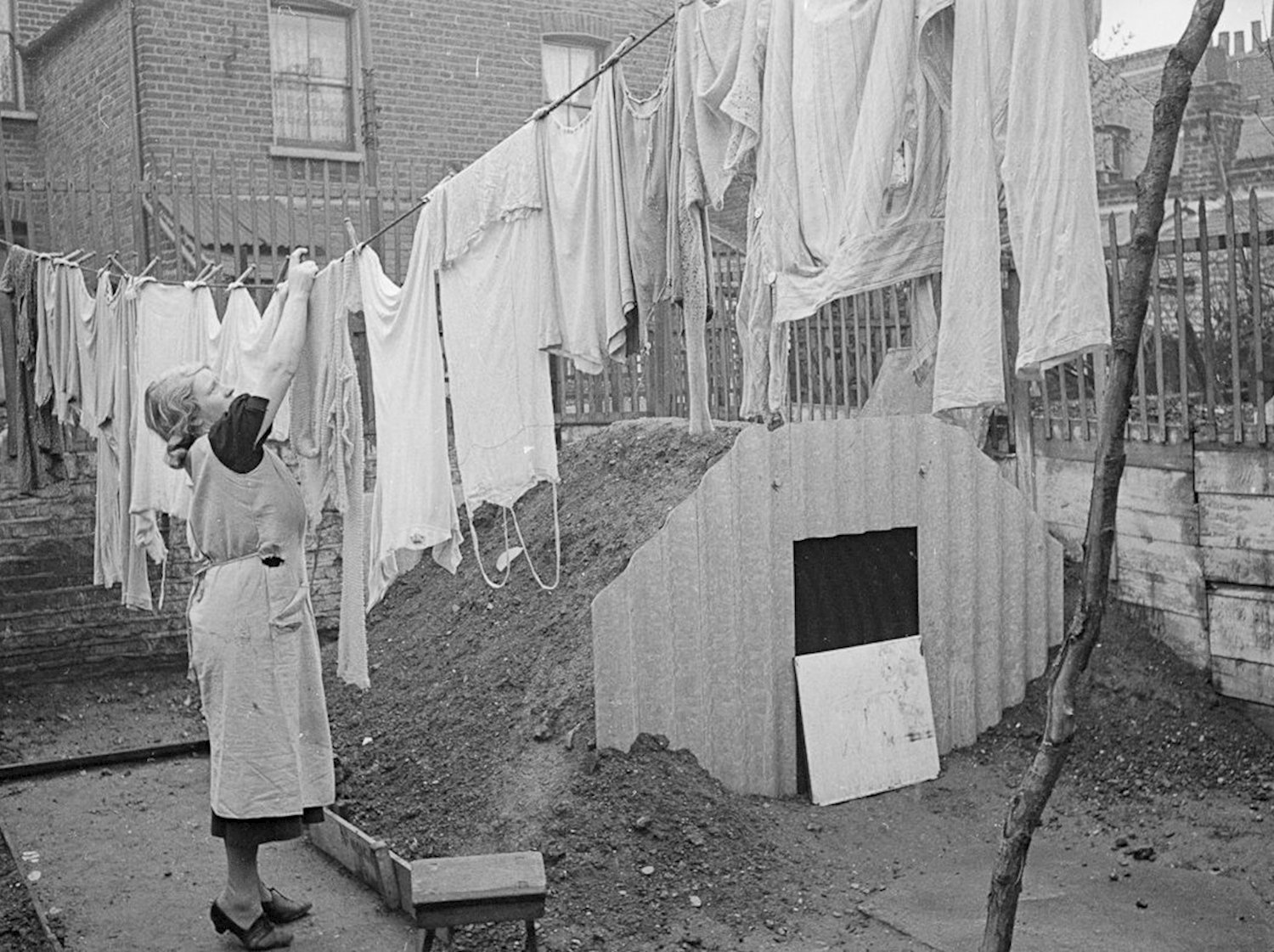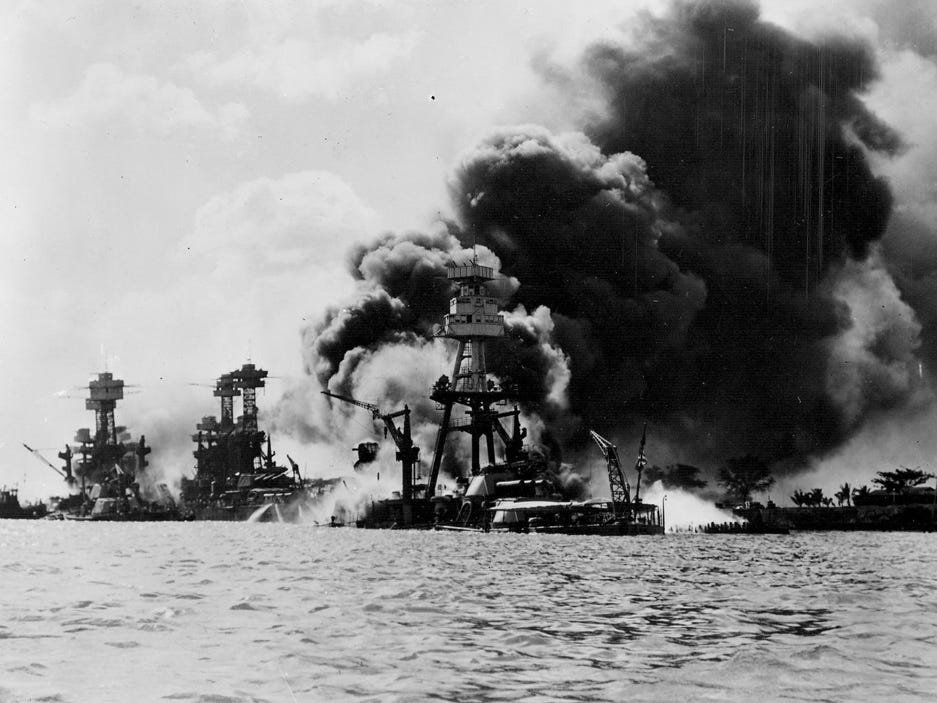World War II: Rethinking the Narrative
We are a product of an education system which encourages us to categorise cultures and diminish them into binaries. School history curricula should give children the opportunity to study an event through several points of view. We must understand the presence of different values in other cultures.
A woman hangs out her washing next to the Anderson air raid shelter in her garden. [1]
After my first history lesson on World War Two at primary school, I went home with the brilliant idea of asking my grandmother what it sounded like to hear a real bomb drop. Did you hear that? Yes - a real bomb! The excitement of such a distant event sparked my imagination as I sat in my booster seat at the back of the car.
‘What were those big bombs like?’ I asked her, my eyes glowing with excitement. She smiled at me and told me that she was standing in the playground with her sister the first time she had heard a German bomb drop. She described the high pitch whistling of a bomb which dropped barely ten miles away from their school. My grandmother then looked at me straight in the eyes and recounted the words that her sister had said to her: ‘Oh! I do hope that bomb didn’t kill Mummy!’.
As she giggled at her own past, my nine-year old self burst into tears. My eyes turned from light to darkness with anger towards this evil Nazi enemy. An event which I had previously only compared to my bed-time stories was a reality. I realised at that moment that the 30,000 real bombs dropped during the Blitz had impacted the lives of real people. Yes - including children who were just like me.
My compassion for the people in my history books became more significant as I grew older. My emotions became wrapped up in my intellectual studies, but these emotions were incredibly black and white. A theme of ‘’good’’ versus ‘’evil’’ – of “goodies” versus “baddies” – prevailed in my school history lessons affecting my understanding of present-day cultures.
Following extensive descriptions in class of Japanese violence during the Second World War, I heard the words: “The Japanese were crazy” countless times. From an early age, barriers were being created between me and other cultures.
If we want to combat stereotypes, individuals need to be taught about cultural differences. Aspects of anthropology and sociology could be usefully incorporated into the school history curriculum to break down crude barriers between “goodies” and “baddies”; between us and them. It is essential for children to understand both sides of a studied event. That way we can avoid prejudice seeping down through generations.
Ruth Benedict, an American anthropologist, studied Japanese culture to better understand their military actions during WW2. In her ethnography The Chrysanthemum and the Sword, she argued that while the Western culture is driven by the concept of achieving happiness, the Japanese were driven by the concept of duty. [2]
During the attack on Pearl Harbor, many Japanese soldiers were prepared to commit ‘seppu’ku’ (suicide) if it meant that they were killing the enemy and fulfilling their duty to the Emperor. As a result, the attack shed a lot of blood and many lives were lost. Children need to be taught that the violence was driven by a different set of values to those followed in the West, rather than merely the act of a "crazy baddy”. We must also ensure that children are aware of the colonial violence conducted by the Western powers.
Battleship Row during Pearl Harbor. [3]
Children must be ingrained with a more nuanced and sophisticated understanding of history to prevent prejudice. It is the perfect opportunity to reach across academic subjects and engage with other disciplinary perspectives such as anthropology to build more complex narratives concerning the harsh realities of events which have occurred.
On this International Holocaust Remembrance Day, my eyes water as I think of the many harrowing events of the Second World War. But they no longer water from hatred; just sadness for the innocent lives which were lost all over the globe which we must not forget. We must fight to remember everyone and actively help to prevent the repetition of such events.
[1] The History Press, Shelter at home in the Second World War, <https://www.thehistorypress.co.uk/articles/shelter-at-home-in-the-second-world-war/>.
[2] Ruth Benedict, The Chrysanthemum and the Sword (1st edn, 1946; Naples: Albatross Publishers, 2019), p.195.
[3] Insider, 19 unforgettable images from the Pearl Harbor attack 79 years ago, (Insider, 7.12.2020) <https://www.businessinsider.com/pearl-harbor-attack-2014-12?r=US&IR=T>.
By Emelye Goult - Commissioning Editor, Anthropology Pathway



